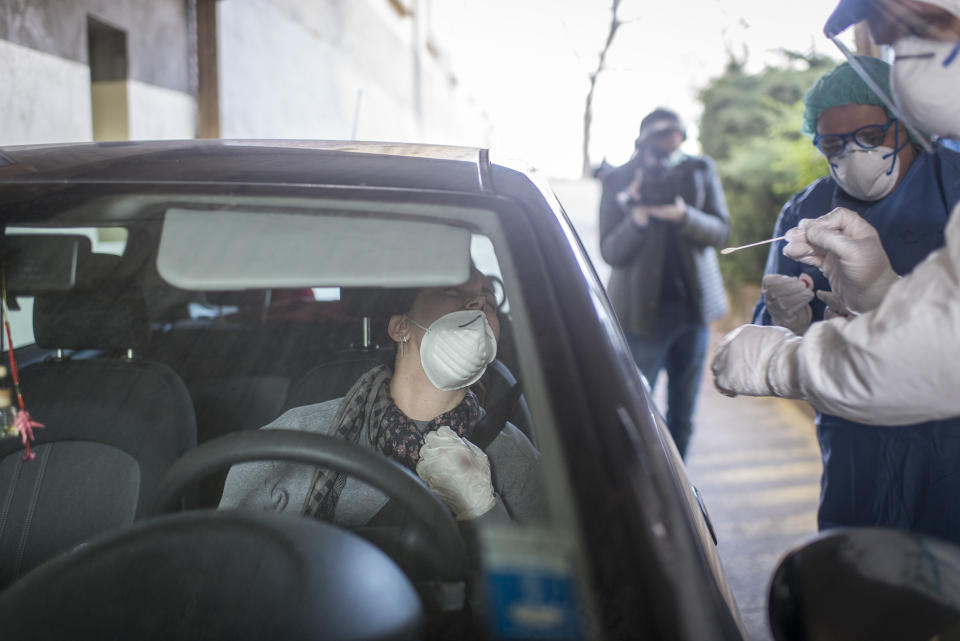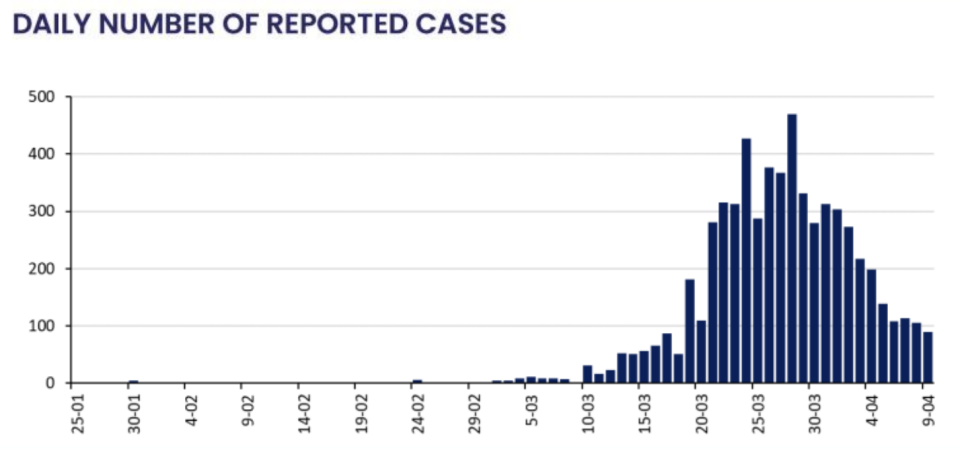The vital next steps now that Australian coronavirus numbers have peaked
The deadly coronavirus pandemic has already peaked in Australia, says virologist Ian Mackay.
During an interview with Yahoo News Australia on Thursday night, the associate professor with the University of Queensland said the country saw its highest increase in cases towards the end of March.
“Technically we have seen the curve peak and now we’re seeing the other side of that,” he said.
He said that what’s vital now is to carry out as much testing as possible to make sure infection rates don’t spike again.
Coronavirus live blog: Latest news and updates from Australia

“Most of the cases in Australia have been through infected travellers and recently that was from the United States but now we’ve blocked off our borders so that’s not really a source anymore. That’s a good thing for us, we’re not seeing as many of those cases.”
On March 24, the number of new confirmed patients soared by more than 400.
An average of around 300 new cases a day followed until March 28, when the country recorded more than 450 new coronavirus patients in one day.
The country has since seen a large decrease, with just under 100 cases across all states recorded on Thursday.

What comes next?
What happens now with the curve really depends on testing, Prof Mackay said.
“If we do enough testing and a lot of testing of the community, we’ll get a better idea of whether we’ve missed anything,” he said.
“Whether or not we’ve got community pockets of spread going on and how big those might be, testing is going to be the only way we find that out.”
When asked if Australia was doing enough coronavirus testing, Prof Mackay said he believes “we’re doing the right amount of testing.”
“Possibly we could have done that a little bit earlier, but we’re doing it now and that’s the main thing,” he explained.
The virologist said he would love to test everyone, but it’s not realistic considering the shortage of equipment globally.
“We need to test carefully, wisely and to do that we have some criteria, which has progressively loosened over time.
“Now they’re pretty loose, we can pretty much test anybody if they’ve got some sort of illness out there in the community,” he said.
Do you have a story tip? Email: newsroomau@yahoonews.com.
You can also follow us on Facebook, Instagram and Twitter and download the Yahoo News app from the App Store or Google Play.





